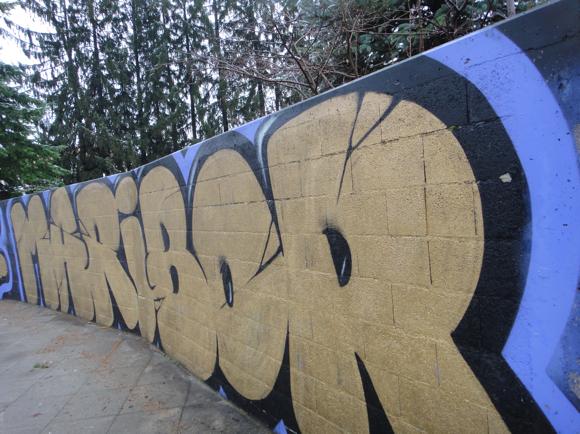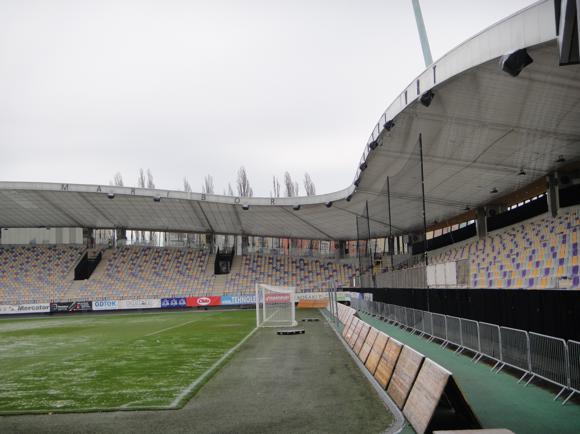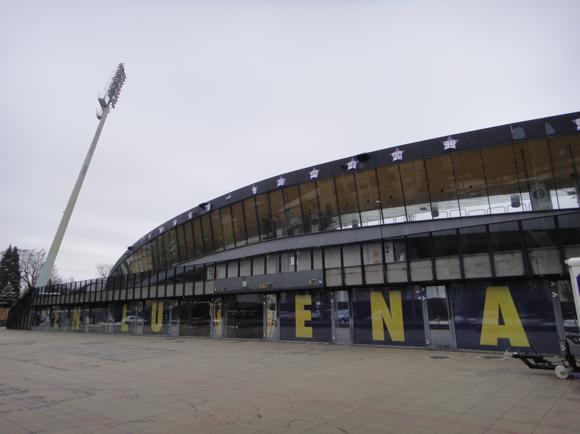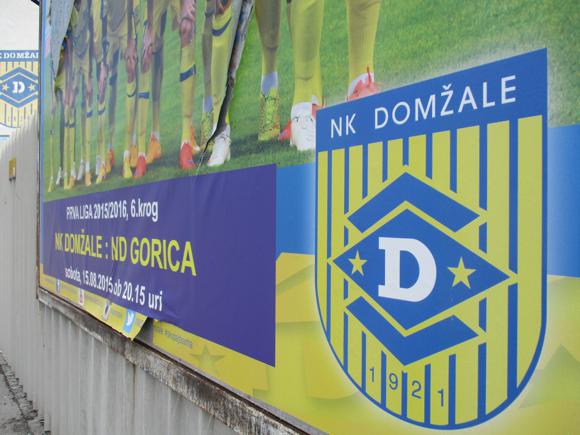A fan’s guide – the club from early doors to today
Slovenia’s most successful club are a modern-day phenomenon. Founded in 1960, NK Maribor played at the highest level in the Yugoslav era then went on to dominate the Slovenian League post-independence.
Along with eight titles since 2011, 2022 champions Maribor have the biggest fan base, the most successful youth academy and the stadium with the fieriest atmosphere. In many ways, Maribor are a model of how to run a football club in former Yugoslavia – Red Star, Partizan or Hajduk Split would be delighted to challenge for the Champions League so often.
NK were formed in 1960 following the dissolution of Branik in the wake of a bizarre food-poisoning incident during the Yugoslav League play-offs.

Based at the Ljudski vrt stadium and playing in signature violet from the early days, NK soon established a rivalry with Olimpija Ljubljana, the Večni derbi, the Eternal Derby.
The pair pulled capacity crowds when both met for the first time in the Yugoslav top flight in 1967-68. This was the beginning of Maribor’s best period in the Yugoslav era, goals from Mladen Kranjc keeping the Slovenes in contention with the top sides from Serbia and Croatia.
Regular Slovenian cup winners and league runners-up in the immediate post-independence era of the early 1990s, Maribor won the title in 1997, the first of seven consecutive championships.
Breaking Olimpija’s initial domination, Maribor benefitted from a regular turnover of goalscoring forwards. Ante Šimundža, Kliton Bozgo and Damir Pekič all headed the goalscoring charts in various seasons as Maribor monopolised the PrvaLiga.

In Europe, a solitary away goal from Dalibor Filipović then an early one at the Ljudski vrt from Šimundža saw off Olympique Lyon to gain a place in the Champions League for 1999-2000. Šimundža also scored the only goal in Maribor’s solitary win in the group stage, against Dynamo Kyiv.
Maribor’s second and current wave of domestic domination came after the club’s financial crisis around 2004, which also saw league rivals Olimpija and local rivals NK Mura to the wall.
The club brought in national icon Zlatko Zahovič – Maribor-born but always at foreign clubs when starring for the national side. Installed as sporting director, Zahovič worked with chief coach Darko Milanič, who played with him at Partizan Belgrade, and former NK striker Šimundža as assistant coach.

Between them, the three used their experience to guide NK back to the top, while the club renovated Ljudski vrt to international standard. Milanič won the title in his first season, high-scoring midfielder Marco Tavares the key man. The Brazilian would go on to become captain and regularly top the goalscoring and assists charts.
With Šimundža as coach and Tavares the icon, NK walked the Slovenian League in 2013-14, picking up former Celje and Olimpija midfielder Dare Vršič halfway through the campaign. With Tavares still outscoring everyone from midfield and Luka Zahovič, son of Zlatko, breaking through, more silverware was inevitable. Maribor won a fifth consecutive title in 2015.
In Europe, Maribor have often taken on British opposition in recent seasons. First, a crucial win at home to Wigan to bookend the group stage of the Europa League in 2013-14 set up a close tussle against eventual winners Sevilla. A year later, with Champions League group-stage riches at stake, a late strike by Tavares at Celtic Park was enough to give Maribor the edge after a 1-1 draw at the Ljudski vrt.

Maribor’s winning streak then came to an end when Chelsea tonked the Slovenians 6-0 though Ante Šimundža’s team could take heart from draws with Mourinho’s men, Schalke 04 and Sporting Lisbon.
After the winter break of 2015-16, with Olimpija Ljubljana running away with the domestic league, coach Darko Milanič was recalled to the Ljudski vrt to protect Maribor’s five-time title streak. All in vain. Luka Zahovič then sparkled in 2016-17, top scorer for the club as Maribor snatched back the title from their eternal rivals.
An early Tavares goal helped Maribor overcome Hapoel Be’er-Sheva in 2017-18 to reach the group stage of the Champions League for the third time. The journey to Liverpool by some 2,400 Viole fans will live long in the memory – as will the 10-0 defeat over two games, including a 7-0 pasting at Ljudski vrt.
Keeping neck and neck with a revived Olimpija in the domestic league, Maribor finished on equal points and a better goal difference – but a poorer head-to-head record. They finished the campaign with no silverware for the first time in ten years.








Stadium Guide
The field of dreams – and the stands around it






Slovenia’s de facto national stadium, the 13,000-capacity Ljudski vrt is known locally as the temple of football. Formerly a park – Ljudski vrt means ‘People’s Garden’ – the ground was most recently developed in 2008.
Maribor’s main area for sporting recreation and home pitch of NK predecessors SSK Maribor from 1920 onwards, Ljudski vrt first saw terraces erected in the Branik Maribor era of the early 1950s. With the formation of NK in 1960, a main stand, offices and changing rooms were soon installed.
Floodlights and plastic seating came as Maribor played regular European football from 1994 onwards. Champions League football five years later encouraged further improvements.

The most recent wave of modernisation began in 2006, some €10 million worth of development, including three new covered stands, the removal of the running track and undersoil heating.
With Ljubljana’s Bežigrad closed and Stožice a relatively recent addition, the Ljudski vrt has shared national-team duty with Celje’s Arena Petrol. For atmosphere, though, Maribor cannot be bettered.
Beneath its signature sweeping roofs, the stadium comprises North (Sever) and South (Jug) Stands behind each goal, West (Zahod) and East (Vzhod) on the sidelines.
The main NK fan group, the Viole Maribor, congregrate in the South Stand, their fellow followers ESS in the East Stand.
getting there
Going to the stadium – tips and timings





The stadium is just over 1km west of Maribor’s main train and bus stations, a simple walk along Slovenska once you get to the centre.
Though it’s hardly worth the bother, bus 7 runs every 30-60mins between the bus station and the stadium.
A taxi from either the train or bus station to the stadium shouldn’t cost more than €6.
getting in
Buying tickets – when, where, how and how much


The Viola shop in town, Vijol’čna Bajta (Tyrševa ulica 1), is also a ticket outlet. The ticket offices around the ground open 90 minutes before kick-off. Online sales are for season tickets only.
There’s a simple pricing policy of €10 for admission to three stands, €6 in the home South Stand, €5 for under-15s.
what to buy
Shirts, kits, merchandise and gifts






The main club store, Vijol’čna Bajta, has two locations, one in town at Tyrševa ulica 1 (Mon-Sat 8am-7pm) and one at the Mercator Center Tabor south of town at Ulica Eve Lovše 1 (Mon-Sat 8am-9pm, Sun 8am-3pm).
Each is unique in that they are the only club shops in Europe that double up as barbers, Frizerska Bajta. You can get a trim while they wrap your violet-coloured merchandise.
Tops and T-shirts come in all kinds of designs – note the ‘Čuj Ti, V Mariboru’ slogans – and there some great match-day posters from various European campaigns.
Where to Drink
Pre-match beers for fans and casual visitors







At the corner of Slovenska and Strossmayerjeva, the MiLa Caffe is a standard café selling Slovenian beer (Zlatorog, Union) in bottles, with a terrace and a TV. Round the corner on Strossmayerjeva, trendy London offers street food, ie various types of burgers.
The other side of the stadium from town, the Branik Tennis Club has its own bar, with Union beer on draught (€2/half-litre), Zlatorog in bottles and sport shown on a big TV.
In the ground, the Tribuna Bar offers both Laško and Union beers, backdropped by black-and-white images of the stadium.







